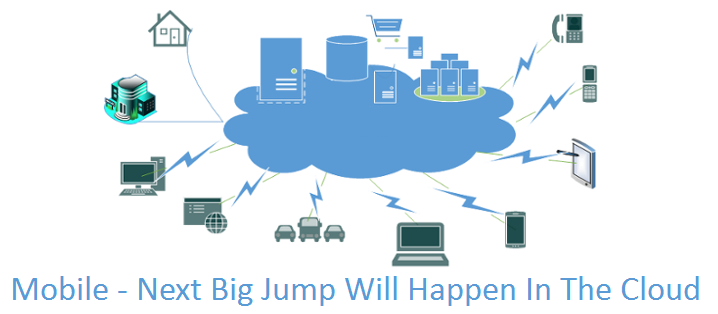Mobile – Next Big Jump Will Happen In The Cloud
 Smartphones and tablets are saturated with resources, leaving less room for innovation on the device.
Smartphones and tablets are saturated with resources, leaving less room for innovation on the device.
The fact that mobile devices such as smartphones and tablets are becoming cloud devices is not new. What is new is that we’re really getting to the saturation point of these devices, leading to greater use of the cloud for mobile applications and providers. Use one that should increase even faster this year.
Smartphones and tablets are getting faster, more capable, and their applications, more sophisticated. My smartphone can download data faster than most DSL services can, the user interfaces are easy to handle, and the applications are equal or superior to what we can find in a PC. In fact, if not for the fact that my smartphone to have a 4 inch screen, I would have written this post on it.
This does not mean that mobile devices have reached the maximum of their technical capability. Suppliers keep finding new ways to improve them. But this task is becoming increasingly difficult. Therefore, the push toward innovations that improve the use of smartphones and tablets are migrating to the affordable cloud hosting providers.
Side infrastructure, the cloud is already playing an increasingly important role. With the use of SDN, some operators are moving the base stations to the data center. This is important because the base station is the most expensive part of a cellular network. Moving it to the data center company (and the cloud) allows the operator to provide sufficient processing capacity in each cell, being better prepared to handle peak traffic, allocating processing resources in parts of the network where they are most needed at any given time.
Also the platform vendors like Apple and Google are pushing computing and storage to cloud-based platforms. Good example of this movement are Google Drive support for document editing and expanding iCloud editing capabilities from the iWork suite.
In fact, mobile devices are becoming more data friendly than stand-alone terminal platforms. This provides better performance, resilience, and of course, another source of revenue for suppliers (again, Google Drive and iCloud are good examples).
On the application side, application providers are taking the same path as the platform vendors, which means greater use of the cloud. Application providers are focusing on development tools for native cloud applications and trying to push as much processing and storage systems to back-end.
Of course, this means more reliance on network connectivity and bandwidth, but this problem is being solved with the increasing use of WiFi, 3G and 4G cellular networks.
The growth of mobile technology has clearly changed our lives. Now, the increasing use of cloud will drive more and more evolution of mobile platforms and infrastructure.
Resources:
- How Cloud Computing Is Changing The Labor Market - March 25, 2015
- Adopting Infrastructure as a Service Can be a Good Deal - March 17, 2015
- Will Virtualize? Take These Six Points Into Consideration - March 12, 2015
